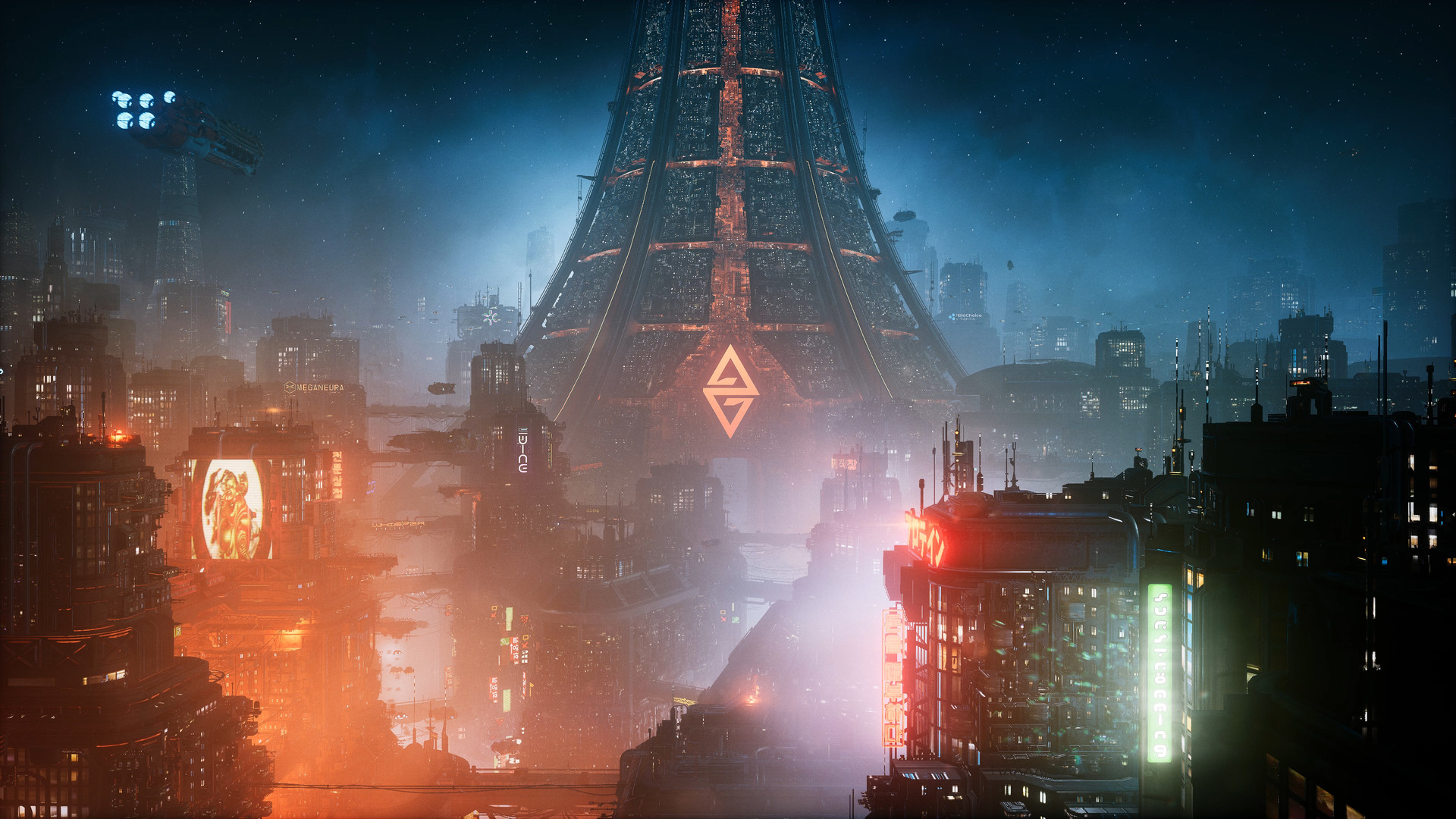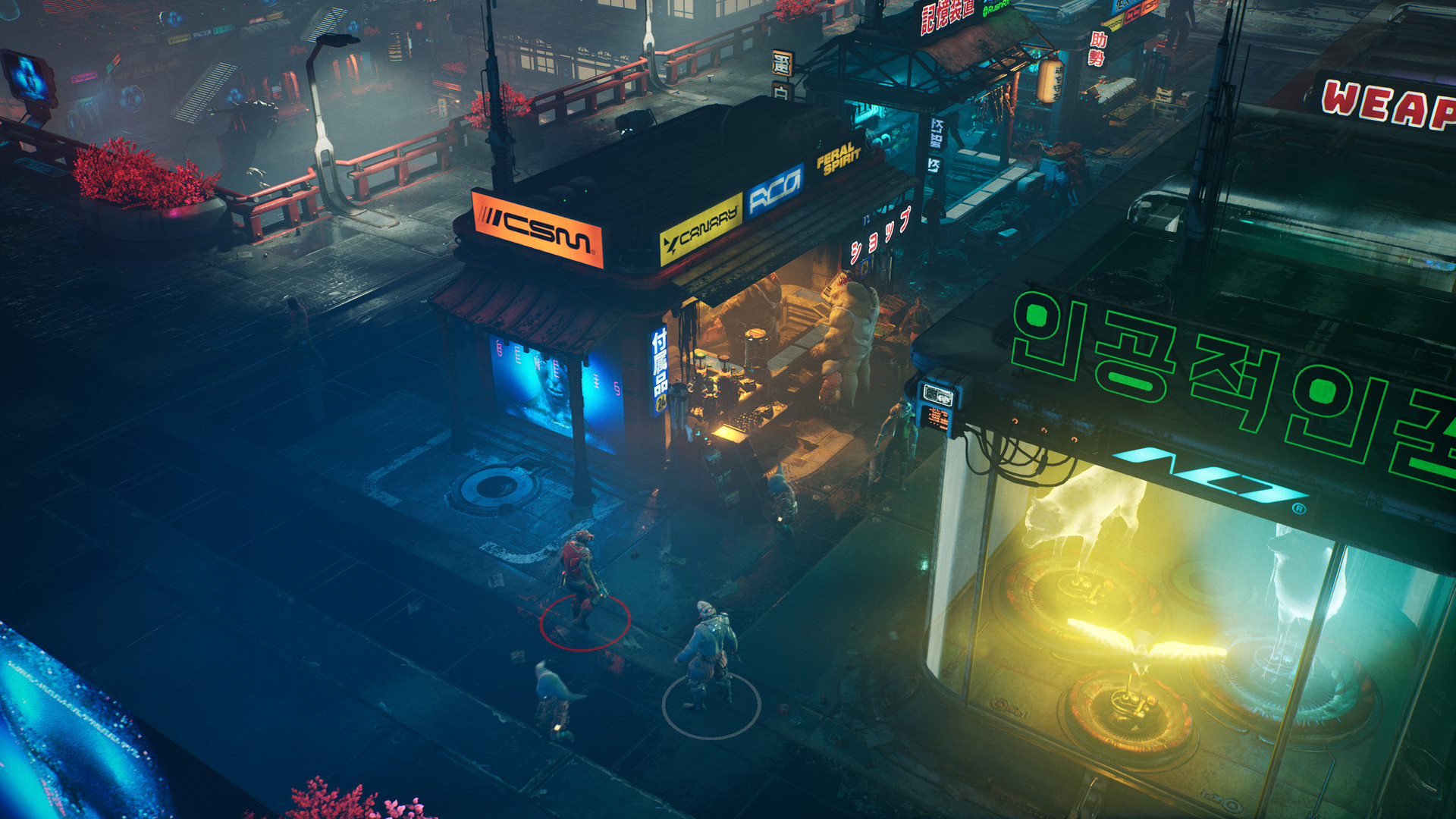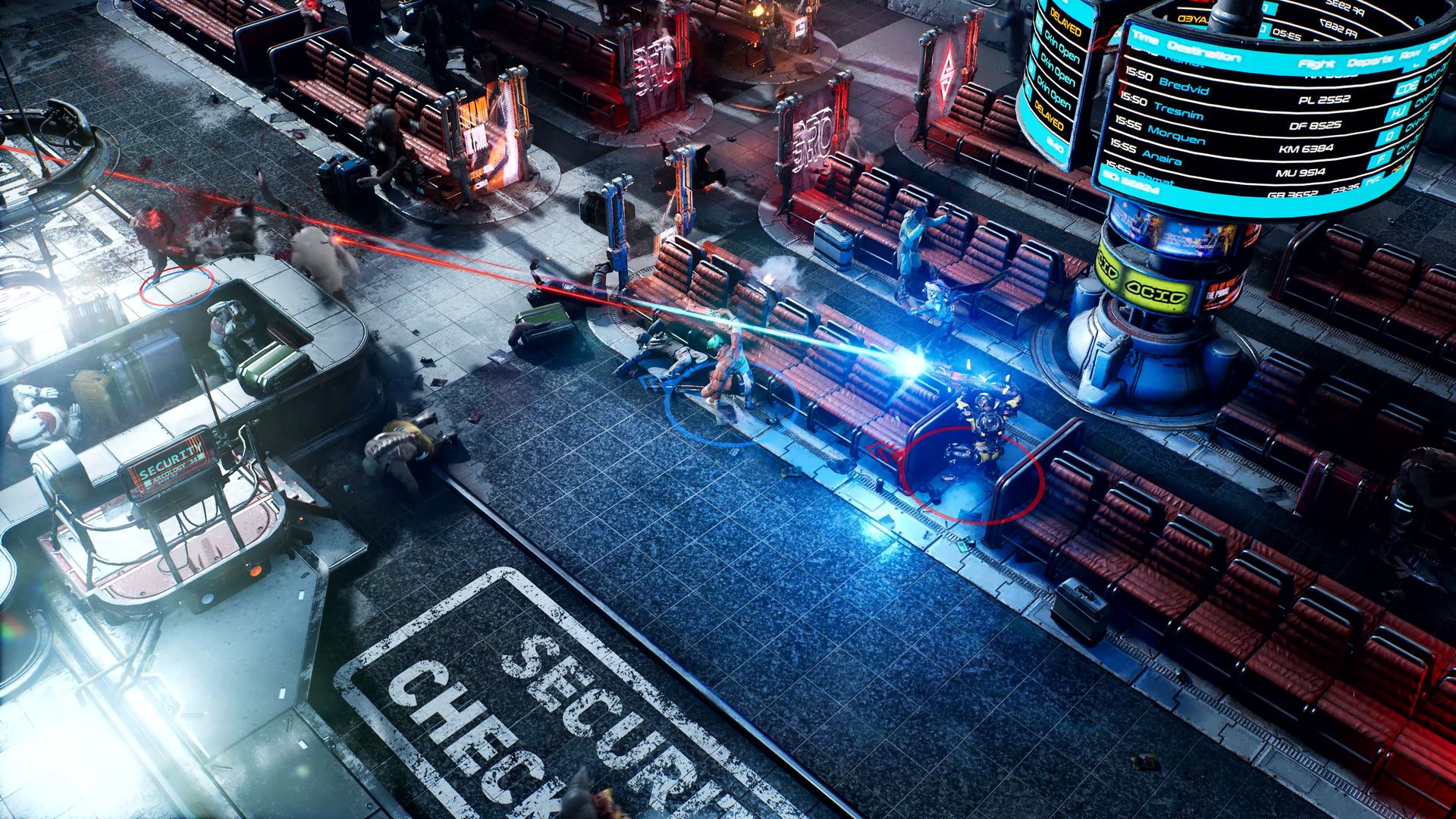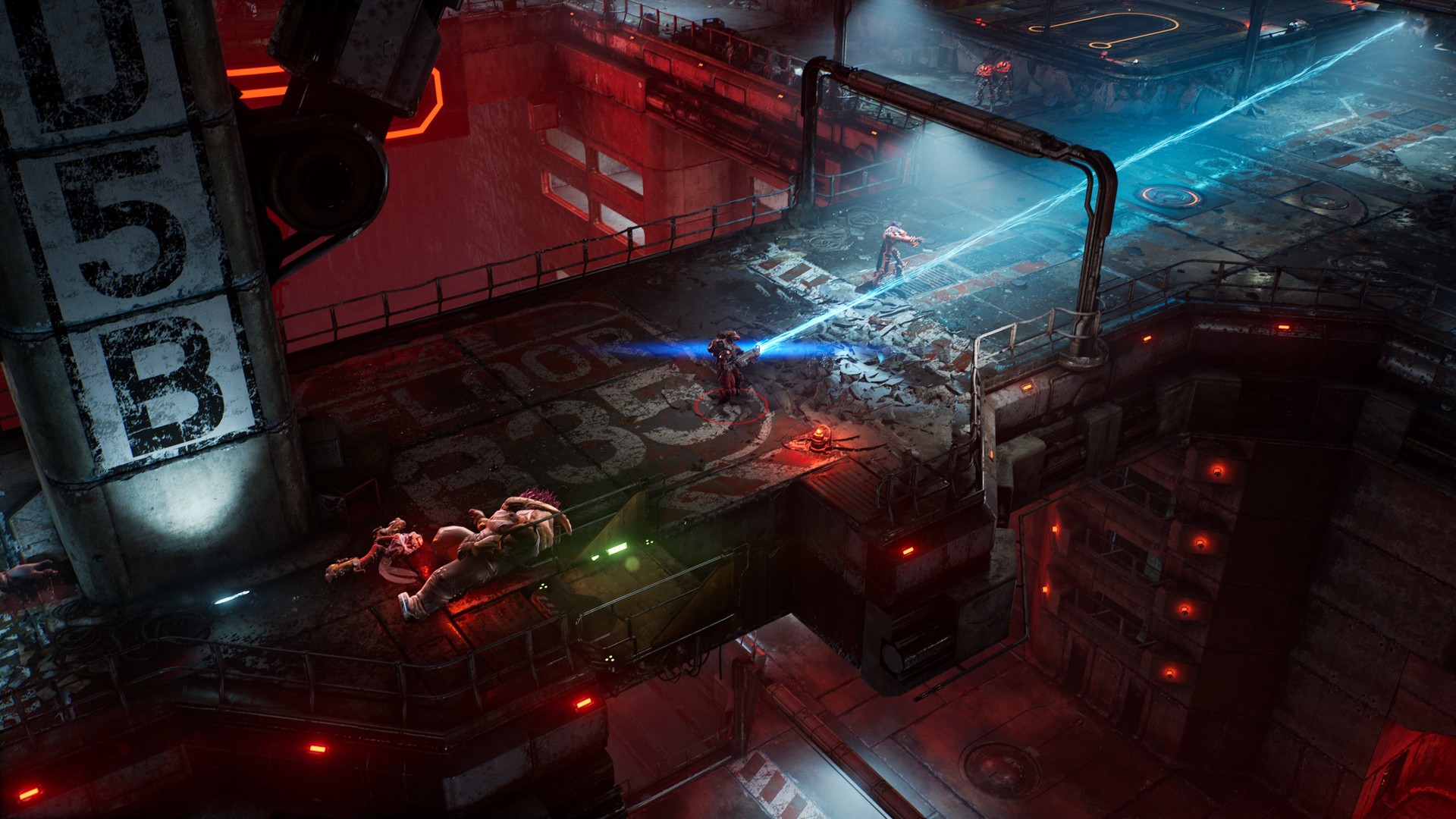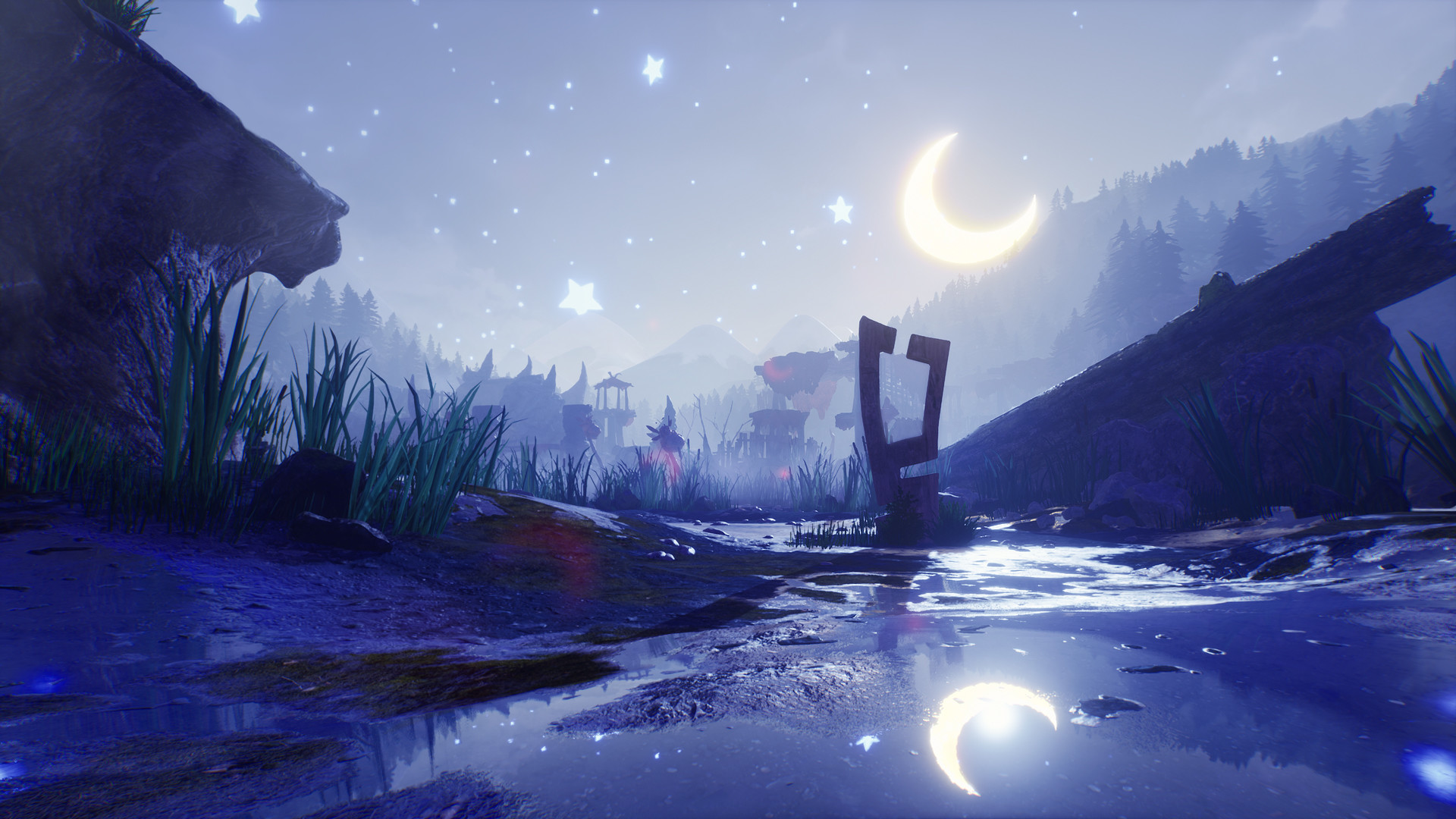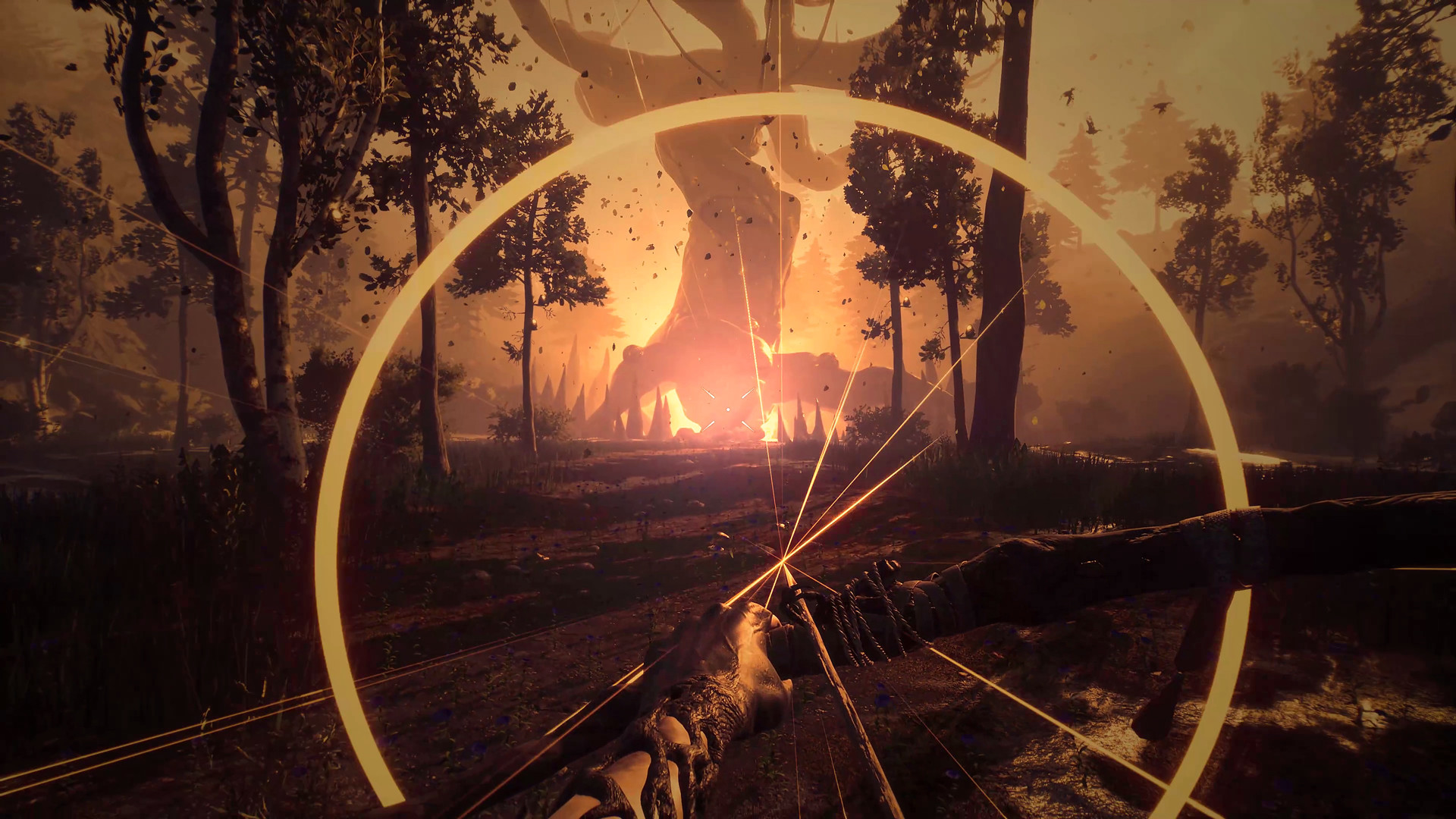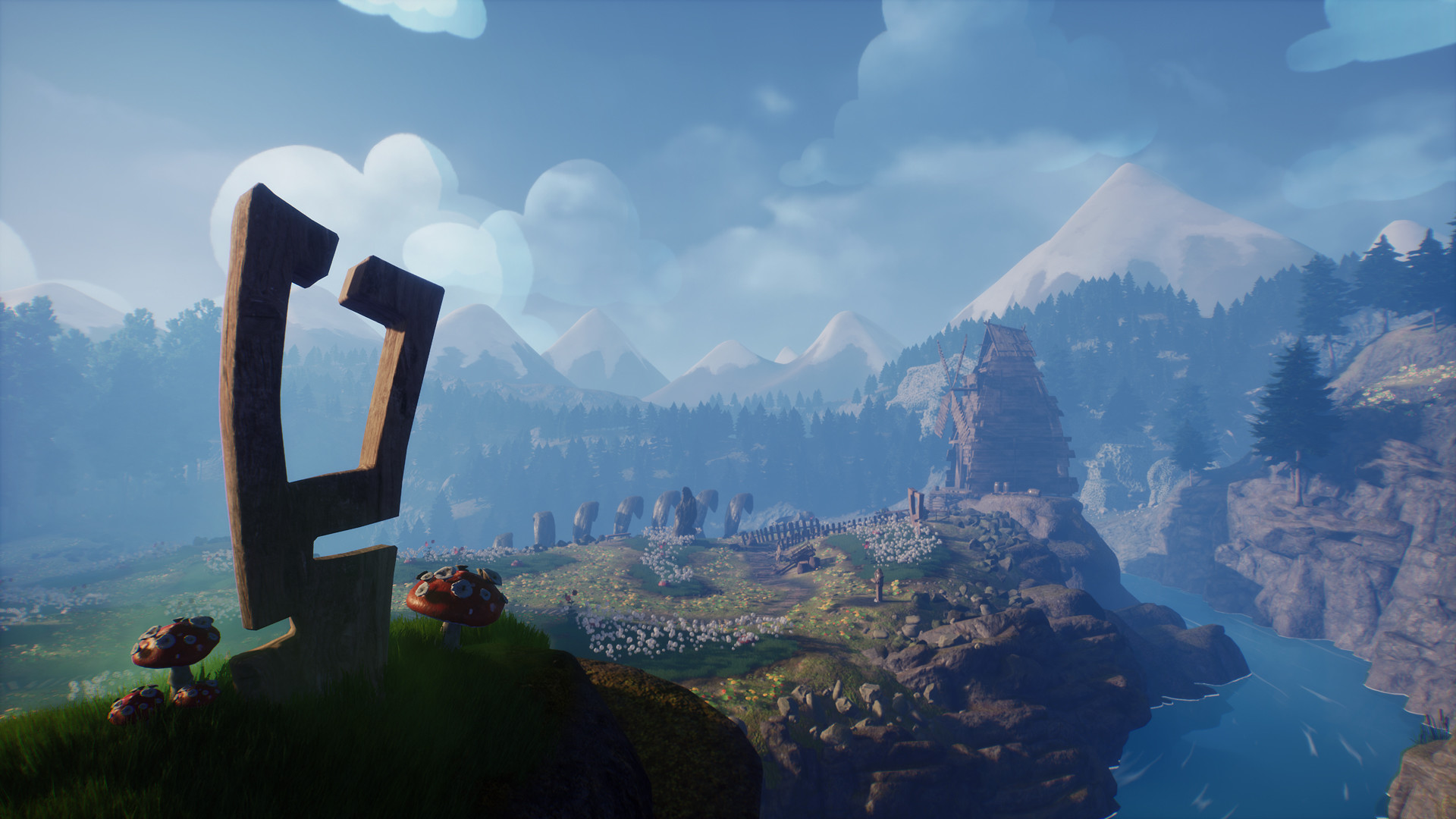New Pokemon Snap Update Out on August 3rd, Adds New Areas and Pokemon
Nintendo's New Pokemon Snap is set to receive a free content update on August 3rd. As revealed in the newest trailer, it adds three new areas, one taking place in Florio Island Nature Park while the others – which have day and night settings – are set in a river and the wilderness. Check it out below.
Of course, there are also new Pokemon to take pictures of including Gyarados, Psyduck, Snorlax and several more. It also seems that there will be new poses and such that Pokemon can have in the wild, leading to even more eye-catching photos. The new areas should also have their own branching paths but we'll have to wait for more details.
Developed by Bandai Namco Studios, New Pokemon Snap is currently available for the Nintendo Switch and is a follow-up to 1999's beloved Pokemon Snap on the Nintendo 64. Check out our official review here and stay tuned for more information on the upcoming update.
The Ascent Prepares for Launch with New Trailer
The Ascent has been appealing to RPG fans, shooter fans, and cyberpunk fans in the lead up to its launch, and it's helped that everything that developer Neon Giant has shown of the isometric action RPG has looked more than a little promising. Now, the game is finally out (or almost out, depending on unlock times), and people can finally jump into its neon-drenched cyberpunk world.
A launch trailer has been released by published Curve Digital to commemorate the game's release, and it serves as a good, brief showcase of its setting, premise, combat, and more. The visuals, of course, are continuing to look impressive (and will look even more impressive in motion on PC, thanks to support for ray-tracing and DLSS). Check out the trailer below.
The Ascent is out for Xbox Series X/S, Xbox One, and PC. In our review of the game, we awarded it a score of 9/10, saying, "The Ascent combines excellent worldbuilding, satisfying role playing, exciting combat, and stellar visuals to deliver an astounding action RPG." You can read our full review through here.
The Ascent Review – Cyberpunk Masterclass
The Ascent understands exactly what it wants to be, and it understand exactly what it needs to emphasize to succeed in what it sets out to do. As fundamental as those things might seem for any game, there's a bevy of examples of even some of the biggest releases that widely miss the mark in at least one of those two areas, if not both. But not The Ascent. The cyberpunk aesthetic, tense shooting, and role playing- those are the three pillars that The Ascent is built on, and it goes out of its way to strengthen those pillars in everything that it does from top to bottom. It's not often that you play a game that exhibits such a thorough understanding of its guiding principles, and mastery over the mechanics that are needed to bolster them, but The Ascent is, without the shadow of a doubt, one such game.
You play as a nameless corporate worker- pretty much a slave, in all but name. Hell, even in name- you and scores of others in this world are referred to as indents, or indentured labourers. The Ascent is set on the planet Veles, where corporations rule the roost. Behemoth, towering structures known as arcologies are the only places on this planet where any life is possible, and each arcology is owned by a megacorporation- and that ownership extends to vast scores of the hundreds of thousands who reside within these arcologies.
The Ascent is set within the arcology owned by a corporation known as the Ascent Group, and you're one of its many indents. While the rich live in the lap of luxury in the higher tiers of the arcology, thousands and thousands of others, you included, languish in the day-to-day grind in the gritty, lower tiers, simply trying to get by. The status quo radically shifts, though, when the Ascent Group crumbles inexplicably and abruptly, simply perishing in the snap of a finger under mysterious circumstances- which, of course, means that the hundreds of thousands living in the arcology who rely on the infrastructure and resources provided by the corporation to live and survive are thrown for a complete loop. As the arcology scrambles to restore order and rival corporations swoop in to try and take control, it falls to you to unravel the mysteries of the Ascent Group's collapse, and perhaps even earn the kind of freedom for yourself that most people can only ever dream of.
"The world of The Ascent is one of the richest, most immersive I have seen in a game in some time, thanks not only to abundant, engaging lore, but also expert worldbuilding that crafts a unique yet believable world that is brimming with personality and a distinct sense of place. It feels lived in, with a history, culture, and social order of its own."
A cyberpunk setting, when pulled off properly, can be a wonderful thing. It is so vibrant, so unique, so thematically rich, and The Ascent is keenly aware of all of that potential. The game's world is large and dense and varied, and pops gloriously no matter where you go. Garish neon lights, streets and structures of glass and metal shining and slick with rain, alleys littered with dirt and grime, holograms bursting out of terminals and screens around every corner, bodies of humans and aliens alike decked out with chrome and silver- The Ascent absolutely nails that aesthetic. Gorgeous, evocative art style forms the backbone of this starkly beautiful cyberpunk world, and it's bolstered by stunning technical achievements. The Ascent is not subtle with its beauty – it's hard to be subtle when you commit so thoroughly to the cyberpunk genre – and suitably enough, it's constantly showing off its world with impressive visual fidelity.
But cyberpunk is, of course, more than just neon and rain and chrome. It's not just an aesthetic- it's also a thematic choice, and this is another area where The Ascent displays a mastery of the genre. The world of The Ascent is one of the richest, most immersive I have seen in a game in some time, thanks not only to abundant, engaging lore, but also expert worldbuilding that crafts a unique yet believable world that is brimming with personality and a distinct sense of place. It feels lived in, with a history, culture, and social order of its own. None of it is ever shoved in your face, and though all the fictional nouns and slangs and nomenclature can feel a little daunting at first, the more you play the game, the more you lose yourself in it.
A world as expertly built and richly detailed as this one is rife for storytelling, but this is one area where The Ascent stumbles a little bit. Or, well, maybe that's a little unfair- it doesn't stumble so much as it simply doesn't emphasize narrative and storytelling a whole lot. The story the game does tell is a decent one, if not spectacular, but it's mostly told through audio conversations and short cutscenes, while it also doesn't help that you play as a silent protagonist. Of course, it's not uncommon for an RPG to throw players into a world dense with lore and backstory, only for the actual immediate story to be fairly straightforward- The Ascent is one such game. Above all else, The Ascent wants you to engage with its deep mechanics and thrilling combat, which means that the actual story ends up taking a bit of a backseat.
"Above all else, The Ascent wants you to engage with its deep mechanics and thrilling combat, which means that the actual story ends up taking a bit of a backseat. It's a good thing, then, that the mechanics are excellent."
It's a good thing, then, that the mechanics are excellent. The most immediate and fundamental mechanic of the game is the shooting, which is a perfect case of "simple yet brilliant." When it comes to combat, The Ascent is an isometric twin-stick shooter, and encourages fast-paced, adrenaline-fueled, run-and-gun gameplay. You might at times find yourself taking cover behind objects and aiming high to shoot at enemies behind cover, but for the vast, vast majority of the game's combat, you're going to be running and gunning. Staying on the move is imperative because of how aggressive enemies are, and thankfully, The Ascent controls like a dream.
The guns, in addition, feel excellent to shoot, while with its enemy variety and its reloading and dodge mechanics, the game also ensures that combat encounters don't just turn into mindless shooting galleries that involve no strategy or restraint. The Ascent also keeps putting you in varied and very smartly designed encounters, each with new and unique challenges, from excellent, challenging boss fights to grueling gauntlets that task you with taking on overwhelming swarms of enemies. Properly navigating your surroundings, striking the right balance between defence and offence, and making smart use of the weapons and abilities at your disposal is always key, which means The Ascent's combat ends up perfectly toeing the line between being strategic and tactical and being blood-pumping and bombastic.
But the combat, as excellent as it is, is just the meat on top of the bones. The skeleton within that holds the entire structure together is that of a mechanically dense and satisfying RPG. Build variety is extremely important in an action RPG, and in The Ascent, there's a lot of ways to build your character into whatever you want it to be. Leveling up grants you skill points to invest in skills, of course, which raises your primary fundamental attributes such as health, agility, energy, and more, but several other methods of customization and powering up your character are also stacked on top of that.
"Properly navigating your surroundings, striking the right balance between defence and offence, and making smart use of the weapons and abilities at your disposal is always key, which means The Ascent's combat ends up perfectly toeing the line between being strategic and tactical and being blood-pumping and bombastic."
There's an impressive variety of weapons to use, for starters, with several different weapons available across the many types available in the game, including shotguns, machine guns, precision rifles, and more overpowered weapons like RPGs and gatling guns. Weapons within these categories also offer meaningful differences from each other, so even if you only want to stick to, say, shotguns, you still get to choose whether you want one that fires regular slugs or one that fires energy beams, one that does more damage or one that has a larger clip.
On top of that, each weapon can also be upgraded with components that you find by exploring the world. Components aren't given out too freely, which means you have to think carefully about which weapons you want to invest in. In turn, that means that weapons don't feel disposable the way you would expect them to in an action RPG such as this one- you're encouraged to stick with weapons you like and keep investing in them, and you're always rewarded for those investments. If you really like that submachine gun you found in the early hours of the game, you can keep powering it up and keep using it as your primary weapon for hours and hours, and not worry about being underpowered. You can also only equip two weapons at a time, which means you always have to make a choice based on what kind of a build you're working toward.
Then there are abilities, which vary from basic things like melee attacks or summoning a decoy that draws aggro from enemies and does a little bit of damage of its own to more specialized moves like marking enemies within range to explode upon death or surrounding yourself with sharp and spinning razor blades that damage anyone that gets too close to you. Abilities all have cooldowns, and they each also consume energy, which is regained by damaging and killing enemies. That, in turn, means that combat in The Ascent achieves a wonderful synergy between shooting with your weapons and using abilities. For instance, if you have enough energy saved up when coming up against an overwhelming wave of enemies, you can equip your gatling gun that has two hundred bullets in its clip, and use an ability that lets you empty the entire clip with flawless accuracy and damage, allowing you to unleash a precise and deadly barrage of bullets.
"All the different elements of The Ascent's combat end up feeling very intrinsically tied to each other, encouraging you to use the full range of your arsenal across your weapons, abilities, and tactical equipment. Not only does it feel mechanically rich, dense, and satisfying, it also keeps things from ever feeling too monotonous."
On top of the weapons and abilities, you also get one slot of tactical equipment, which can be something as basic as EMP or frag grenades, or, later on in the game, something much more deadly and helpful, like a turret or a mech suit that fights by your side. Meanwhile, you can also equip your character with augments and cybernetic enhancements that provide more passive advantages, such as improved healing or faster dashes for more effective dodging. Tactical equipment, too, has a separate meter of its own, which is also filled up by damaging or killing enemies, which means that all the different elements of The Ascent's combat end up feeling very intrinsically tied to each other, encouraging you to use the full range of your arsenal across your weapons, abilities, and tactical equipment. Not only does it feel mechanically rich, dense, and satisfying, it also keeps things from ever feeling too monotonous.
On paper, none of these might sound like unique, out-of-the-box ideas- but they don't need to be. They stand out because of their execution, not because of their inventiveness. They work as well as they do because they're implemented ingeniously. The Ascent understands that simply offering players a deluge of options in the tools at their disposal isn't enough- those options also have to be meaningfully different from each other, and each have their own strong pros and cons. It's a classic case of quality and quantity, and it encourages actual, proper build diversity, something that is so crucial in a game like this.
That's something that's true of the gear as well. Across three different categories – head, torso, and lower – The Ascent constantly provides you with new gear pieces, which not only often radically differ from each other on a visual level, but can also be uniquely useful in specific situations. For example, a boss that specializes in fire damage might be giving you too much trouble even if the gear pieces you have equipped have good stats, but go into the battle with different gear that buffs your fire resistance, and you'll end up having a much easier time against it. It's not just numbers on a screen- the gear has an actual, tangible impact. You know, the way it should in a proper RPG. Best of all? There's no level scaling. Go to an early area with a buffed-out character, or to a high-level area with an underpowered one, and in both instances, you'll instantly feel the power gap. A simple yet effective way to make the progression feel meaningful and worth investing time in, and one that not nearly RPGs employ in today's day and age.
"The Ascent understands that simply offering players a deluge of options in the tools at their disposal isn't enough- those options also have to be meaningfully different from each other, and each have their own strong pros and cons. It's a classic case of quality and quantity, and it encourages actual, proper build diversity, something that is so crucial in a game like this."
One area where The Ascent does run into some issues, however, is optimization. None of the issues I've run into have been anything major, but they can't be completely overlooked either. Minor technical issues like audio glitches, texture pop-in, and momentary freezes pop up every now and then, while I've also had a couple of crashes. There are also a few quality-of-life deficiencies that collectively add up. Fast-travelling, for instance, is rather inconvenient. The Ascent's world is split across multiple tiers, and while you can fast travel within a given tier freely (unless you're in an indoor location), to travel between tiers, you need to use specific elevators. So if you want to quickly go from one place in one tier to another place in another tier, you have to sit through at least two fast travel load screens, which are punctuated by travelling on-foot to the elevator that will take you to a different tier of the arcology. Other than that, the map in The Ascent can also be hard to read at times. On several occasions, the map claimed to have brought me to the target location of a quest, and only after aimlessly roaming around for a couple of minutes would I realize that the map had mistakenly glitched out and brought me somewhere I'm not supposed to be.
In the grand scheme of things though, those are all rather minor issues. Playing The Ascent is an absolute joy, whether you're blasting your way through scores of enemies, or engaging with its dense and satisfying role playing mechanics, or hunting down quests and side quests in its rich, gorgeous world, or losing yourself in its deep, engrossing lore. It's impossible not to tip your hat to a game like this, but all of its achievements become even more impressive when you consider the fact that it was made by a team of just a dozen people. The Ascent has an acute understand of what makes the cyberpunk setting tick, of what makes for a good role playing game, and of what a good combat system needs to do. It's one of the most impressive action RPGs you'll ever play.
This game was reviewed on the Xbox Series X.
Seagate FireCuda 530 NVMe SSD Will be Compatible with the PS5
Sony launched the PS5 last year without the ability to expand its SSD, though confirmed that expansions would be enabled eventually. Just earlier today, it was confirmed that an upcoming firmware update is going to make that possible, and we now know what the first SSD is to be officially supporting the PS5 as well.
Seagate announced the FireCuda 530 PCIe Gen4 NVMe SSD recently, which is going to be launching very soon, and speaking with Finder, they confirmed that the SSD will indeed be compatible with the PS5's SSD expansion slot, as some have predicted. Both versions of the SSD – with and without the heatsink – will be compatible.
So far, the only external SSD to support the Xbox Series X/S has also been made by Seagate.
The FireCuda 530 NVMe SSD will come with four options- 500 GB, 1 TB, 2 TB, and 4 TB, costing $140, $240, $490, and $950 respectively. If you get the heatsink models though, the price is kicked up to $160, $260, $540, and $990 respectively. So yeah, you're going to have to cough up a ridiculous amount of money for one of these when they launch in August.
The Ascent Doesn't Have Ray-Tracing on Xbox Series X/S
Neon Giant's cyberpunk action RPG The Ascent has been turning heads since it was announced last year, and it's been doing that for many reasons. Alongside its intriguing setting and the promise of frantic combat mixed with dense role playing mechanics, the game's also looking like a visual showcase, and every bit of it that's been shown off so far has looked quite impressive on multiple fronts.
We know that the game is going to support ray-tracing (and DLSS) on PC, but what about the Xbox Series X/S? Speaking in an interview with Wccftech, The Ascent's creative director Tor Frick confirmed that ray-tracing is a PC-only feature, and not included on Xbox.
That said, even on Xbox, the game looks incredible, and is confirmed to be running at 4K and 60 FPS, so it's not like console players aren't in for a visual treat.
The Ascent is out later today for Xbox Series X/S, Xbox One, and PC, and will also be available via Xbox Game Pass.
Jurassic World Evolution 2 Developer Details Sandbox and Challenge Modes
The upcoming Jurassic World Evolution 2 is looking like a promising sequel, with a number of improvements being made to its predecessor's winning formula, from larger maps to improved dinosaur interactions to so much more. Sandbox and Challenge modes will be returning, of course, and developer Frontier Developments recently detailed some of the biggest improvements being made to these modes in a recent forum post.
The Challenge mode will still come with four difficulty levels, and each difficulty on each challenge will be unlocked by attaining a certain star rating on the previous difficulty. Meanwhile, Challenges will now also have Conditions, which will vary based on what difficulty you're playing on, such as reducing the maximum number of dinosaurs allowed in your park on higher difficulties.
"Each level is a bespoke challenge with different tasks you'll need to complete," senior community manager Jens Erik writes. "The conditions, maps and what you have available to achieve is different for each level, and it's up to you to decide how to achieve a five star rating.
"These Challenge Mode missions will have both a global location and a context that will make them really fun to play. They're not tied into the game's main narrative, so each can be played in isolation; plus, you'll earn unique species cosmetic unlocks for earning 5 stars across the different difficulties, so there's lots of reasons to take up the challenge!"
Where the Sandbox mode is concerned, while it will, of course, be retaining the base experience from the previous game, it will also throw in some new elements, such as having maps available from the Challenge mode and Chaos Theory mode (a new "what if" style mode in which you play through scenarios from the movies). Meanwhile, players will also be able to make use of the game's overhauled terrain system to "build a nature reserve style park."
Jurassic World Evolution 2 is due out some time this year for PS5, Xbox Series X/S, PS4, Xbox One, and PC. A specific release date for the game is yet to be announced.
Destruction AllStars Developer Delays Season 2, Releases New Patch
For all the potential its core game mechanics showed at launch, Destruction AllStars has sort of petered out into the background since its release earlier this year, and it hasn't helped that the game's post-launch support hasn't exactly been the most stellar. Season 1 kicked off nearly three months ago, but with the next season approaching, developer Lucid Games has announced in a blog update that that's been delayed.
Season 1 is being extended so that the developer can focus on "the game's core experience". New tiers have been added to the current battle pass, but a new patch for the game has also gone live, with brings several improvements and additions. Latency has been improved to prevent "ghost hits", while cooldowns for all slams on all vehicles have also been "drastically" reduced.
Meanwhile, the patch also adds several new things to the game:
- New high quality skins and cosmetics
- Online parties for solo game modes
- A new Quickplay playlist
- Buffs to AllStars and Hero Vehicles
- Two Reworked Mayhem maps with smaller arena size (going live in a few weeks)
- Three new premium AllStar Pass tiers
- Refreshed shop interface
Destruction AllStars is available exclusively on PS5.
Crimson Desert Delayed to Unknown Date
Adding on to the list of delays this season is Pearl Abyss's Crimson Desert. The developer/publisher announced on Twitter that the open world title was being delayed in order to "dedicate more time to adding new ideas for an even deeper, more enriching game." While it's looking to "create the best possible experience," the team also wants to ensure "the health and safety of everyone involved in delivering the game".
Announced at The Game Awards 2020 and originally slated to release this Winter, Crimson Desert serves as a prequel to Black Desert. Though the latter is an online MMO, Crimson Desert is touted as a single-player title focused on a band of mercenaries in Pywel. The player controls Macduff who is haunted by his past and must lead his band to success. Combat appears to be based on Black Desert's responsive hack and clash gameplay but more grounded and visceral.
While a new release date or window wasn't announced, Pearl Abyss said it would provide an "updated schedule in the future." Stay tuned for updates, whenever they may be revealed. Crimson Desert is being developed for PC, Xbox Series X/S and PS5.
An important message from the #CrimsonDesert team: pic.twitter.com/pKJPBNyW3P
— Crimson Desert (@CrimsonDesert_) July 29, 2021
Resident Evil Village and Monster Hunter Rise Drive Record Q1 Profits for Capcom
Capcom has announced its financial results of the first quarter of the current fiscal year (April 1-June 30), and the company is continuing to enjoy impressive commercial success on the back of strong sales for major well-received releases.
Capcom says it has posted its highest ever net sales and profits to date for the first quarter of any fiscal year, with the primary drivers being the sales for Resident Evil Village and Monster Hunter Rise. At last count, Resident Evil Village had shipped 4.5 million units worldwide, while Monster Hunter Rise had shipped over 7 million units.
The company has reported a 104.1% year-over-year increase in net sales and a 120.4% year-over-year increase in operating profits. Over the course of the quarter, Capcom sold 13.3 million units of console games, which is up 44.6% from Q1 of the previous fiscal year.
Resident Evil Village is available on PS5, Xbox Series X/S, PS4, Xbox One, PC, and Stadia. Monster Hunter Rise is currently available exclusively on the Nintendo Switch, but will also be releasing for PC next year.
Capcom recently also released Monster Hunter Stories 2: Wings of Ruin (though that's a Q2 game, given its July launch), which has already surpassed 1 million worldwide shipments.
Blacktail Interview – Story, Combat, Morality, and More
The folks at The Parasight have quite a bit of experience with the horror genre, having previously worked on several games at Bloober Team, but with their upcoming game, they're bringing a unique flavour to the horror experience. Blacktail looks like a charming fairytale adventure at first glance, but the game is promising a dark and twisted narrative inspired by Slavic folklore, with an emphasis on tense gameplay and tough moral decisions. All the elements seem to be in place for an interesting horror game, in short, and curious to learn more about Blacktail and what will make it tick, we recently sent across some of our questions about the game to its developers at The Parasight. You can read our conversation with CEO and creative director Bartosz Kapron below.
"When thinking about Blacktail, we were looking for a significant and vibrant character that would be deeply rooted in the local folklore but still relatable for different cultures."
Blacktail's got a fascinating premise that's drawing from Slavic folklore, especially with its focus on the Baba Yaga. Can you talk about how the idea for this premise first emerged?
One of The Parasight team's main principles is making creative use of great ageless narratives like legends or fairy-tales and forge them into fantastic realms to tell unique, original stories within them. When thinking about Blacktail, we were looking for a significant and vibrant character that would be deeply rooted in the local folklore but still relatable for different cultures. There's always some evil in the woods, you know—Slavic Baba Yaga has many counterparts in other mythologies.
Baba Yaga is certainly a puzzling character. You can't say exactly whether she's evil or good. She's always been somewhere in between. This ambiguity comes from different tellings of the tale and her nature varies depending on the region. We saw that as the potential to provide players with an opportunity to forge their own stories. Did Baba Yaga live in the gingerbread house or the house standing on a chicken leg? Did she cook children in the cauldron and eat them, or did she help wanderers lost in the woods? What events lead to either of those outcomes? A number of common cultural tropes rooted deep in this tale is impressive and provides a full canvas for our creativity. We want the player to explore our take on the overarching origin story while creating their own image of Baba Yaga in the dark fairytale setting we're working on.
You have a team comprised of many who have had a lot of experience with the horror genre- is that something that Blacktail is going to be leaning on heavily?
The most important lessons we took home from working in the horror genre were tension and pacing throughout the narrative. That being said, we're far from done exploring the darkness itself. Myths, legends, and fairy tales are some of the oldest narratives known to humanity. Over the years, they have become sweet and dull bedtime stories. But we have to keep in mind that initially, folk tales were dark and scary. And they were like that for a particular reason—they were meant to warn and remind us that in the dark corners of the world, somewhere beyond the surface of everyday reality, dwells an unknown, unspeakable evil. Acts of violence, cruelty, and breaking taboos were inseparable elements of such stories.
We draw enormous amounts of inspiration from ancient folk tales, so Blacktail's story premise is quite dark too. As a result, the game's overall atmosphere and certain events will border on thriller territory. Instead of cheap scares, we're looking to add a pinch of suspense and a tingling feeling of dread. So while Blacktail remains a choice-heavy action-adventure, players are definitely in for some bone-chilling moments.
"The most important lessons we took home from working in the horror genre were tension and pacing throughout the narrative."
The focus on both archery and melee combat, specifically with a gauntlet, is an interesting element in the game. Can you talk about how those two balance each other out, and how much variety players can expect from the game's combat encounters?
The gauntlet is more of a way of keeping the enemies at a safe distance. Our primary focus is bow combat—the player will have multiple mechanically different arrow types at their disposal, all of which can be modified via various passive and active skills of their choice. Couple that with environmental hazards (that can play both to your advantage and disadvantage), some specific movement mechanics and different enemy types, and what you get is a battle system that relies heavily on clever tactics, preparation, and reflexes. A fragile 'glass cannon' build with increased damage? Go for it but keep moving, don't let them hit you. Or maybe more of an 'Area of Effect crowd controller' relying on damage over time? We've got you.
How extensive is the morality system in the game going to be? Will it impact the story and how it plays out in significant ways?
The morality system is a crucial gameplay mechanic which we're using widely throughout the game, both through the main storyline and in various sidequests. The player's morality level has a massive impact on how the game is played by modifying the protagonist's skill set accordingly. It also determines which characters are willing to cooperate with Yaga and which are hostile. In the course of the game, the player will be able to switch their morality whenever they decide—it won't be easy to go from bad to the bone to a perfect angel, but with a bit of work it's still possible. Morality will also significantly affect how the story ends, but obviously, we won't go into details about that now.
The morality system having an impact on the gameplay itself is one of the game's most fascinating elements. Can you talk about how that will play out from a mechanics point of view, and how much abilities will vary based on the choices players are making?
Some passive skills will be exclusive for either good or bad characters, and the strength of their effects will depend on how far on the morality spectrum the player will go. There will also be a particular active ability that has additional effects dependent on morality in a similar way. This ability will surely help players 'sweep' enemies away. By the way, what's the best tool for sweeping that comes to mind?
Roughly how long will an average playthrough of Blacktail be?
It's still too early to make any public statement about how long it will take to beat the game, but one thing you can be sure of: Blacktail is not a game for a single evening, not for two evenings either. Completing the main quest may even keep you awake longer than a night marathon with your favorite trilogy's director's cut. Plus, it is also too early to reveal how extensive will all the side content be. We all know that playthrough times also rely heavily on individual playstyles. All in all, you can be certain that Blacktail will keep you entertained for quite a while.
"The morality system is a crucial gameplay mechanic which we're using widely throughout the game, both through the main storyline and in various sidequests."
Why did you decide to launch only for the new consoles? Was it a matter of not wanting to be limited by the PS4 and Xbox One's aged hardware?
As an indie studio working on its debut game, we chose to cut down unnecessary limitations so that our creative vision does not suffer. Having more powerful hardware at our disposal enables us to focus more on the design and narrative aspects of the game, instead of putting effort into porting the game for all available platforms. Captivating gameplay and intriguing story are our priorities for Blacktail.
Since the reveal of the PS5 and Xbox Series X's specs, a lot of comparisons have been made between the GPU speeds of the two consoles, with the PS5 at 10.28 TFLOPS and the Xbox Series X at 12 TFLOPS- but how much of an impact on development do you think that difference will have?
I think the difference between PS5 and Xbox Series X is not that significant. I'm pretty sure that every game developer is happy that we have no recurrence of the situation from "old gens", where we had a significant difference between PS4 and Xbox One—which in particular took its toll in recent years. We need to remember that if we are publishing the game on different platforms, we always need to consider the weakest hardware.
The Xbox Series S features lesser hardware compared to Xbox Series and Microsoft is pushing it as a 1440p/60fps console. Do you think it will be able to hold up for the graphically intensive next-gen games?
I think Series S is a very ambivalent piece of hardware. On the one hand, it makes the new generation much more affordable. On the other hand, everyone has doubts as to whether it won't be a ball and chain, especially when the next gen will kick off for good. Personally, I think that despite the obvious difference in the target resolution in the future, we may also witness setting scaling between series X and S.
"As an indie studio working on its debut game, we chose to cut down unnecessary limitations so that our creative vision does not suffer. Having more powerful hardware at our disposal enables us to focus more on the design and narrative aspects of the game, instead of putting effort into porting the game for all available platforms."
Super Resolution is coming to PS5 and Xbox Series X/S. How do you think this will help game developers?
Super Resolution is definitely a great feature. It will help developers to achieve higher frame rates with minimal quality loss, mask lower resolution effects, maintain high-quality detail and in result – achieve better image fidelity.
What frame rate and resolution does the target on PS5 and Xbox Series X and S?
At this point, we're targeting two modes: Quality mode: 4k and 30fps, Performance mode: dynamic resolution (targeted 4k) with 60 fps. We need some more tests regarding Xbox series S.
